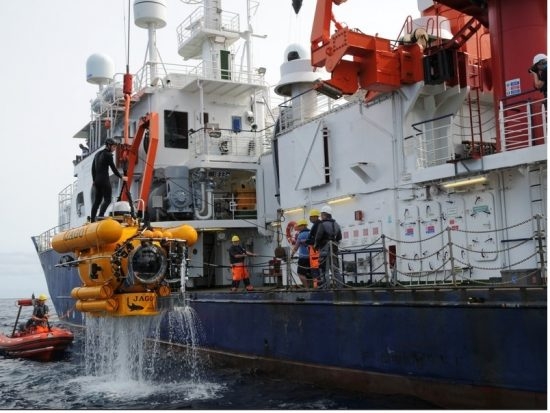
© JAGO being brought on board the POSEIDON after a dive off El Hierro. Photo: Maike Nicolai, GEOMAR
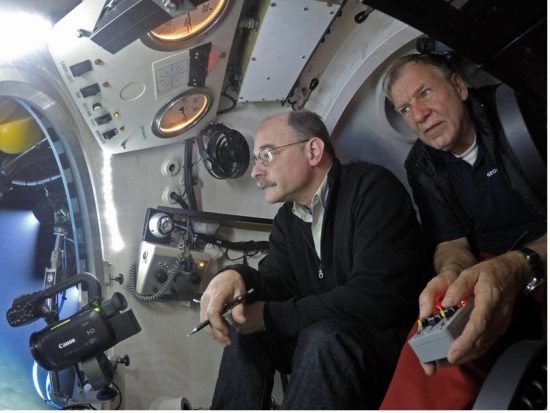
© Prof. Mark Hannington and pilot Jürgen Schauer (GEOMAR) inside JAGO. Photo: JAGO team GEOMAR
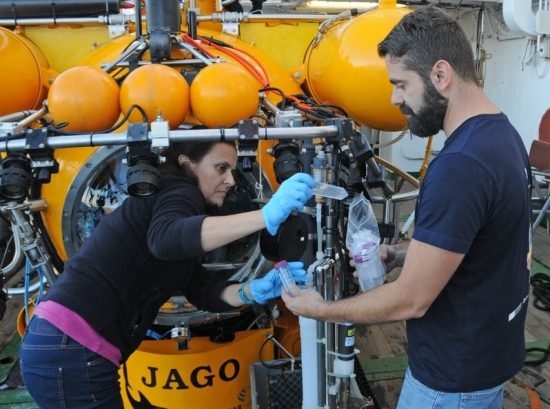
© Prof. Juana Magdalena Santana Casiano (ULPGC) and Dr. Eugenio Fraile Nuez (IEO) tap gas and water samples after a JAGO dive. Photo: Maike Nicolai, GEOMAR
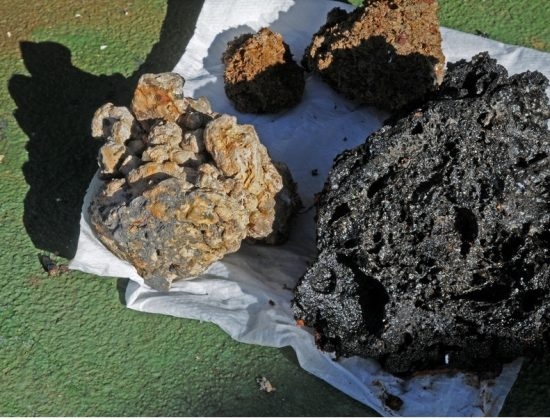
© Rock samples from the submarine volcano off El Hierro. Photo: Maike Nicolai, GEOMAR
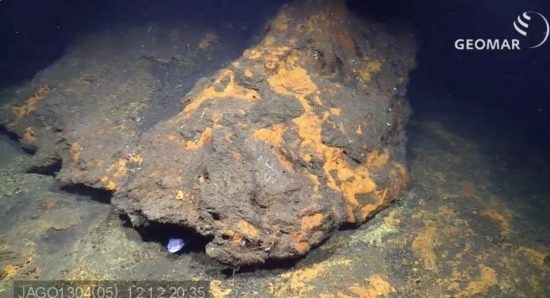
© High concentrations of iron oxides can be seen in this area, which also serves as a home for conger eels (205m deep). In the photo, the head of one of these eels can be seen.